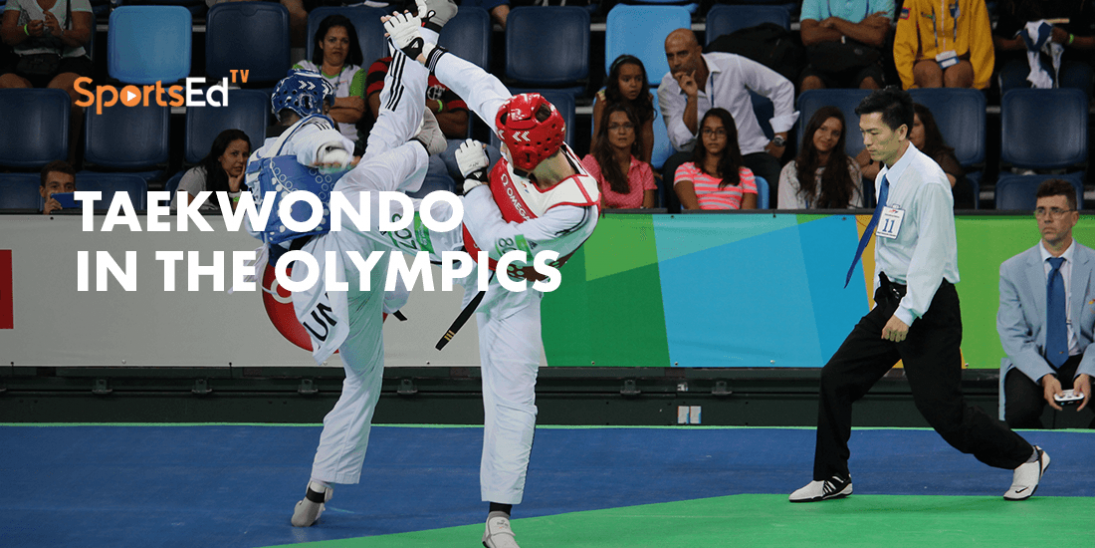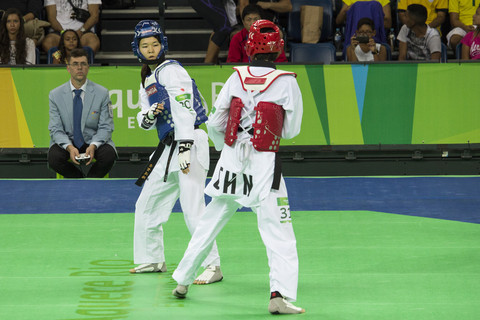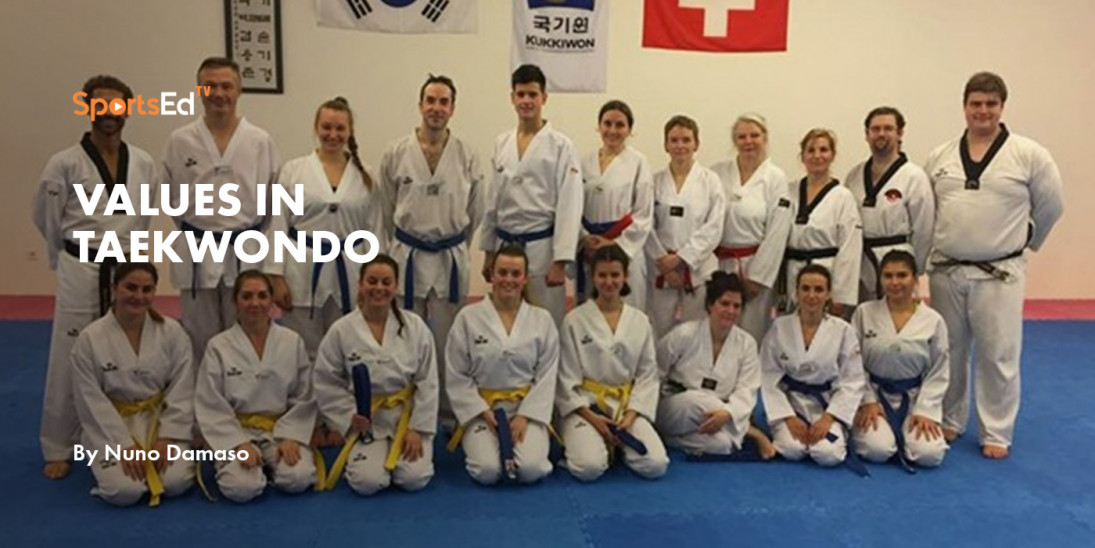Taekwondo
Welcome and thanks for visiting...

Taekwondo in the Olympics: A Dynamic Display of Martial Arts

Taekwondo, a Korean martial art known for its lightning-fast kicks and precision strikes, has become a staple of the Summer Olympics since its introduction in the Sydney Games in 2000.
With a rich history, rigorous rules and formats, a challenging qualification process, and a lineup of remarkable athletes, Taekwondo is a thrilling spectacle that combines athleticism, strategy, and tradition.
Olympic History of Taekwondo
The journey of Taekwondo into the Olympic arena began in 2000 when the sport made its debut as an official Olympic event. This marked a significant milestone in the history of martial arts, as it was the first time Taekwondo, the ancient martial art of Asian origin, was included in the Olympic program.
Taekwondo at the Olympics
Taekwondo competitions at the Olympics are divided into multiple weight categories for both men and women, providing a fair platform for athletes of different sizes and body types to compete. These weight classes typically include lightweight, middleweight, and heavyweight divisions, ensuring that each athlete competes against opponents with similar physical characteristics. Since its inception, Taekwondo has captivated audiences worldwide with its thrilling mix of high-speed kicks and punches.

Rules and Formats
Taekwondo competitions in the Olympics are governed by the World Taekwondo (WT) rules. Matches are contested on a mat, with athletes wearing protective gear, including headgear, chest protectors, shin guards, and gloves. The objective is simple: score points by landing clean kicks and punches on your opponent's body or head.
Matches consist of three rounds spanning two minutes, with a one-minute rest period between them. Victory is achieved by winning two out of the three rounds. If a round concludes with a tied score, the winner is determined based on the following criteria in order of priority:
The athlete with the most points from turning or spinning kicks.
If technical scores are identical, preference is given to the contestant scoring more with high-value techniques in the sequence: Head, Trunk, Punch, Gam-Jeom.
Specific additional rules come into play if there's still a tie after these evaluations.
To score points, athletes must execute techniques with precision. Kicks and punches must be controlled and strike the designated scoring areas—head or body—with enough force. Electronic scoring systems are used to ensure accuracy in judging. Head kicks and turning techniques earn more point values.
Olympic Taekwondo competitions are organized into multiple weight categories for both men and women. These weight categories ensure that athletes of similar size and weight compete against each other, creating a fair and balanced playing field.
Men's Weight Categories:
-58kg (Under 58 kilograms): This is the lightest weight category for men.
-68kg (Under 68 kilograms): The second lightest weight category for men.
-80kg (Under 80 kilograms): The middleweight category for men.
+80kg (Over 80 kilograms): The heavyweight category for men.
Women's Weight Categories:
-49kg (Under 49 kilograms): The lightest weight category for women.
-57kg (Under 57 kilograms): The second lightest weight category for women.
-67kg (Under 67 kilograms): The middleweight category for women.
+67kg (Over 67 kilograms): The heavyweight category for women.
It is important to note that the number of weight categories for the Olympic Games is half that of the World Championships due to the Olympic limit of 128 participating athletes. Athletes who compete in non-Olympic weight categories during the World Championships and other tournaments are grouped into the closest Olympic category for both qualification and participation in the Olympic games.
Preliminary Elimination Competitions
Olympic preliminary or elimination Taekwondo matches are typically organized through a combination of seeding and a random draw. Here's how the process generally works:
Seeding: Seeding is a process where the top-ranked athletes in each weight category are strategically placed in the tournament bracket to avoid early matchups between the strongest competitors. The seeding is based on the athletes' performance and rankings in previous international competitions leading up to the Olympics.
Random Draw: After the seeding is determined, the remaining athletes are randomly drawn to fill in the rest of the tournament bracket. This random draw helps ensure fairness and unpredictability in the competition, as it prevents athletes from knowing their potential opponents in advance.
Match Pairings: Once the seeding and random draw are complete, the tournament bracket is formed. Athletes are paired up in a single-elimination format, meaning that the winner of each match advances to the next round, while the loser is eliminated from the competition. The bracket progresses until the final match determines the gold medalist, with bronze medal matches also held to determine third-place finishers.
Repechage: In Taekwondo, a repechage system is often used. Athletes who lose to the eventual finalists in the early rounds of the competition get a second chance to compete for a bronze medal. This is done to recognize the strong performance of athletes who were eliminated by the finalists and give them an opportunity to compete for a medal.
The combination of seeding and random draw helps create a balanced and competitive tournament. Seeding ensures that top-ranked athletes are distributed throughout the bracket, reducing the likelihood of early matchups between favorites, while the random draw adds an element of unpredictability to the pairings. This system aims to provide a fair and exciting competition for both athletes and spectators in Olympic Taekwondo.
Explaining Olympic Taekwondo Qualifying
Qualifying for the Olympic Games in Taekwondo is a structured yet diverse process, encompassing four distinct pathways to secure a spot:
Olympic World Ranking: Athletes can secure their positions based on their standings in the global rankings, reflecting their performance in various international competitions leading up to the Olympics.
Continental Qualification Tournament: Each continent holds specific tournaments where athletes from that region compete for a limited number of Olympic berths.
Host Country Allocation: To ensure representation from the host nation, four spots are reserved across different weight categories for athletes from the country where the Olympics are being held.
Solidarity Spots: This is a special allocation of four spots, emphasizing inclusivity and global representation. These positions are often awarded to nations or athletes who might not have qualified through the traditional routes but embody the spirit and values of the Olympic movement.
Athletes qualifying for the Olympics in Taekwondo don't secure a personal spot. Instead, they earn a position for the National Olympic Committee (NOC). This means the NOC can choose any eligible athlete from that weight category to compete, not necessarily the one who qualified. Thus, the final decision on Olympic participation rests with the NOC.
The Olympic Taekwondo competition boasts a unique format, setting it apart from regular tournaments:
Cream of the Crop: While each weight category accommodates just 16 athletes, this limitation and qualification process often means the Olympics become the battleground for the finest in each category.
Streamlined Format: Owing to a seeding system based on ranking points, the competition does away with elements like random draws and repechage rounds. Every match-up is thus a direct reflection of the athletes' achievements leading up to the games.
Medal Recognition: Unlike other tournaments, the Olympic format awards two bronze medals per weight category, ensuring that four top-tier athletes receive accolades for their efforts.
Here is the link to National Olympic Committees








